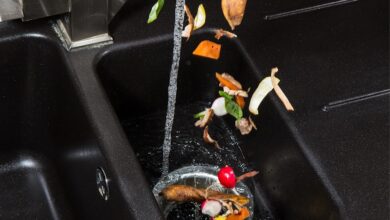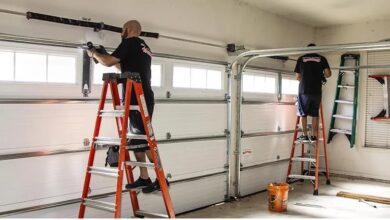5 Landscaping Tips From The Pros

If you’re looking to improve your lawn, try incorporating some landscaping tips. Grouping plants together in beds or islands will make mowing much easier, and they will also provide a focal point. Also, grouping plants together will keep mowing from mucking up individual plants. Avoid removing leaves from your plants – this is a common mistake, but it also removes important natural nutrients.
Do-it-yourself landscaping
If you are looking to save money on your landscaping project, consider doing the job yourself. The labor cost for landscaping professionals is usually between $1 and $2 per square foot, which could mean several hundred dollars in savings. But keep in mind that it is not a simple task, and it can take up to 40 hours to complete it. Moreover, if you make any mistakes or cut corners during the landscaping process, it could lead to costly consequences. You may also want to consult a professional landscaping Idaho Falls, especially if you are not sure about your skills.
First, you must plan your landscaping project thoroughly. Before you begin, create a scaled map of your property. Take into account features such as the driveway and trees.
Plants that provide shade
Plants that provide shade in landscaping are a wonderful way to create a relaxing and shady oasis in your yard. Shade-loving plants love the cooler temperatures and protection from strong winds, and they make the perfect addition to your side yard or out-of-the-way retreat. Choose a variety of hardy perennials that will last for many years.
First, consider the type of light that you receive in the area. Plants that thrive in shade areas will need to be able to handle the low light levels found in this environment. Plants that do well in a deep shade will often have a thick canopy, so the light they receive will be filtered. However, if you live in a very sunny area, you can still plant a shade-loving plant to give it the light it needs to grow.
Plants that offer vibrant colors in fall
Color is a big part of fall, and it’s no different in your flower bed. Bright foliage, contrasting with soft, shimmering flowers, is a great way to set the scene. Many plants produce colorful leaves at this time of year, and some species even produce fall foliage that mimics stained glass.
Colorful leaves can be found in a variety of plants, from red maples to oaks. Many types of trees produce anthocyanin, a pigment responsible for many of nature’s stunning colors in fall. This compound also plays a role in spring preparation and can protect plants from insects. Higher elevations and northern climates produce more vibrant fall foliage than lower-lying areas.
The most beautiful foliage in fall is seen in forests of North America. Maples, oaks, and sassafras provide unrivaled autumn color. In addition, the sap of maple trees is used to make maple syrup.
Plants that are easy to maintain
When deciding what plants to use in your landscaping, choose those that require minimal maintenance. Consider ground covers and perennials that don’t require much maintenance. These plants help with drainage, attract pollinators, and stifle weeds. You can also choose a plant that repels insects, such as lavender. Choosing a tree that doesn’t need staking or a complicated pruning routine is a good idea as well, but be prepared to spend some money.
Plants that are easy to maintain are often the most durable plants. These types of plants will grow much slower than other plants, making them easier to maintain. They are also more resistant to pests, and require fewer pruning sessions. If you’re looking for a landscape design that will last for several years, choose woody plants with slower growth rates. This will ensure that they don’t outgrow the space you have available to them.
Common mistakes in landscaping
One of the most common landscaping mistakes is improper planting of trees or shrubs. This can lead to stunting, not flowering, and eventually death of the plants. For example, it is important to avoid placing trees and shrubs in shady areas. The plants need moisture and shade to grow well, and placing them in sunny areas will cause them to burn.
A well-kept, well-maintained yard will give your home great curb appeal. However, an unadorned lawn or a bare yard can lead to more damage than it’s worth. For example, trees can prevent ventilation on your roof and allow pests to enter the attic space. Additionally, broken branches can damage the roof. Meanwhile, hedges can trap moisture in siding and lead to the growth of molds.



